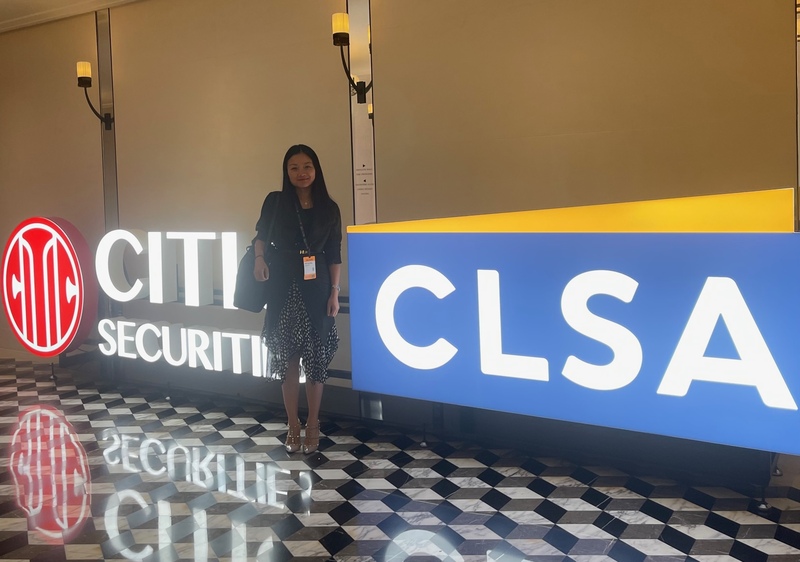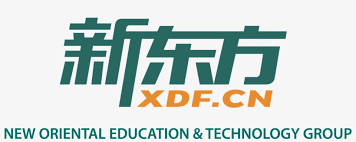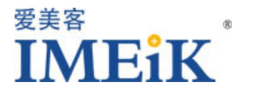In September, we attended the 30th CITIC CLSA investors’ forum in Hong Kong.
As one of the biggest events for the investment community in the region, this conference gathered almost 400 corporates and 2,000 investors (o/w. 600 international) this year, a sharp increase compared to 2019 (314 corporates and 1,100 investors including c.400 from overseas). Amid impeding economic slowdowns in major developed countries and weaker-than-expected momentum in China, global economy finds itself in a precarious position. As such, we find it interesting and necessary to go to Hong Kong, a financial center which has served as the super connector between  China and the rest of the world for decades. We took the chance to exchange with management teams from 27 companies, mostly Chinese, such as Mindray, Huadong Medicine in the healthcare sector, Shenzhou, Yadea, Imeik, New Oriental Education in the consumer sector, Fuyao Glass, Xinyi Glass in materials, AAC Technologies, Sunny Optical, and ASMPT in technology. We also met Mediatek, Vangard and AirTac from Taiwan, LG Energy Solution and Naver from Korea, Masan Group and Techcombank from Vietnam and One 97 Communications (PayTm) from India.
China and the rest of the world for decades. We took the chance to exchange with management teams from 27 companies, mostly Chinese, such as Mindray, Huadong Medicine in the healthcare sector, Shenzhou, Yadea, Imeik, New Oriental Education in the consumer sector, Fuyao Glass, Xinyi Glass in materials, AAC Technologies, Sunny Optical, and ASMPT in technology. We also met Mediatek, Vangard and AirTac from Taiwan, LG Energy Solution and Naver from Korea, Masan Group and Techcombank from Vietnam and One 97 Communications (PayTm) from India.
Having visited mainland China in May (2 fund managers visited 7 cities in 2 weeks, cf. out travel report) and August (vacation), this was our third trip to Greater China since the beginning of the year. Overall, most Chinese companies we met seemed slightly more positive regarding their 2H23 outlook (sequential growth) thanks to government’s pro-growth stance and better-than-expected August macro data. Many still kept a cautious outlook for 2024 because of limited visibility (both China and abroard), but a few companies showed strong confidence despite a still-weak macro driven by their industry dynamics (Shenzhou, Imeik, Fuyao Glass) and self-help effort (New Oriental Education). While we do feel concerned by China’s structural headwinds and property weakness, some bottom-up opportunities with long term growth prospect and attractive valuation seemed highly interesting. Elsewhere, the Taiwanese companies we spoke to were more concerned by mixed global macro environment (ex AI and EV) than upcoming presidential election (Jan 2024). Vanguard and Mediatek both benefit from accelerating relocation from China (or “China Plus One” strategy). However, the former also faces increased competition from mainland Chinese companies. In Korea, LG Energy feels confident about its long-term competitive advantage as a key EV battery supplier to the EU and especially US market but guides a weak 2S23. Naver’s improved take rate was a positive, but its competitive advantages in e-commerce and AI strategies seemed not convincing enough for us…
Company focus: New Oriental Education (Sales: $3.8bn; Market Cap: $10bn)
 Established in 1993, New Oriental Education (EDU) is a large provider of private educational services in China, whose offerings consist of overseas test preparation & consulting, domestic test preparation targeting adults and college student business, high school tutoring etc... Like its peers, the company suffered a major blow in July 2021 after the Chinese government launched the “double reduction” policy to reduce the burden of excessive homework and lower family spending on after-school tutoring. The company lost the K9 (primary & middle school) academic services, which used to contribute to more than 80% of its revenue.
Established in 1993, New Oriental Education (EDU) is a large provider of private educational services in China, whose offerings consist of overseas test preparation & consulting, domestic test preparation targeting adults and college student business, high school tutoring etc... Like its peers, the company suffered a major blow in July 2021 after the Chinese government launched the “double reduction” policy to reduce the burden of excessive homework and lower family spending on after-school tutoring. The company lost the K9 (primary & middle school) academic services, which used to contribute to more than 80% of its revenue.
While most players in the education sector went bankrupt, EDU was quik to restructure. On one hand, the company has consolidated the advantages of the legacy overseas test preparation and overseas study consulting business. On the other hand, it actively developed new business opportunities, including quality education, live e-commerce, cultural tourism, and other fields. These efforts bore fruit in 1QFY23 as the company returned to profit. We were impressed by the management’s confidence and the visibility of their business despite a weak macro. As a result of strong demand and less competition, EDU sees robust growth outlook for legacy businesses (30-40% yoy increase for overseas test preparation, 15-20% yoy for consulting) and new business offerings (50% yoy increase for non-academic trainings). They expect consolidated revenue to grow by 30% yoy in FY 2024, as well as margin expansion. While the utilization rate has steadily increased post reopening (60%+ now), the management plans to expand capacity by 15-20% to meet demand in non-academic tutoring and overseas test preparation. Well, it is true that what doesn’t kill you, makes you stronger.
Company focus: Imeik Technology Development (Sales: $0.4bn; Market Cap: $11.6bn)
 Driving by increasing public acceptance, consumers’ changing habits and product innovation, China’s medical aesthetic market is in fast expansion (+15% pa by 2030). In recent years, the non-surgical procedures (injections, optoelectronic products…) appear to have been increasingly favored by consumers and industry players because of their minimally invasive nature, shorter recovery time and greater affordability. Thanks to its well proved effects, suitability for various parts of the body and attractive pricing, hyaluronic acid (HA) filler products has growing into the largest sub-sector of medical aesthetic injection market. Such trends are highly positive for Imeik Technology Development (Imeik), China’s largest HA-based derma filler supplier a in terms of sales volume.
Driving by increasing public acceptance, consumers’ changing habits and product innovation, China’s medical aesthetic market is in fast expansion (+15% pa by 2030). In recent years, the non-surgical procedures (injections, optoelectronic products…) appear to have been increasingly favored by consumers and industry players because of their minimally invasive nature, shorter recovery time and greater affordability. Thanks to its well proved effects, suitability for various parts of the body and attractive pricing, hyaluronic acid (HA) filler products has growing into the largest sub-sector of medical aesthetic injection market. Such trends are highly positive for Imeik Technology Development (Imeik), China’s largest HA-based derma filler supplier a in terms of sales volume.
Established in 2004, Imeik catering to customers’ beauty demands with a rich product portfolio covering different price points and wide-ranging applications. Of its 5 HA-based dermal fillers, the company enjoys the first to market advantage for 4 products. It also offers 1 PPLA-based derma filler (CureWhite), 1 PPDO facial implant thread product, and several pipeline products such as Botox (target launch in 2024) and weight management solutions (2025/26). While medical aesthetics industry was also a subject of regulatory tightening, government policies mainly targeted illegal products and institutions. Such headwinds could actually benefit industry leaders like Imeik to gain more market share in the long term. Despite macro slowdown, the management feels confident about growing the revenue at 45% yoy this year. They are also optimist about the margin outlook (best-in-class industry GPM at 90%+!) because of downward pricing of key raw materials, improved product mix and strong brand equity.
products and institutions. Such headwinds could actually benefit industry leaders like Imeik to gain more market share in the long term. Despite macro slowdown, the management feels confident about growing the revenue at 45% yoy this year. They are also optimist about the margin outlook (best-in-class industry GPM at 90%+!) because of downward pricing of key raw materials, improved product mix and strong brand equity.
The substantial channel profit could also enable the company to hike price in some cases: ex. Hearty’s ex-factory price is RMB300/unit for neck wrinkle product and RMB600/unit for eye wrinkle product, while the retail price of institution is RMB3,000/unit, implying 4-10x markup rate.

